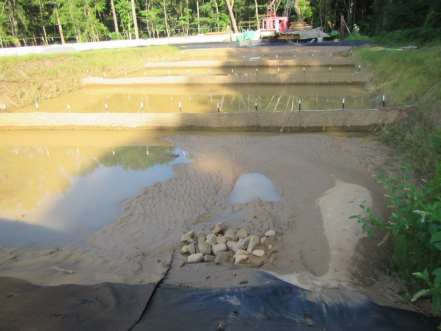This project encompassed investigations into a variety of practices currently in use or with potential applications to managing construction site stormwater. Dust control is necessary during dry periods on construction site haul roads, and is currently controlled by constant applications of water by tanker trucks. Three dust control products with different properties were tested using simple application methods. CaCl2 was the one product that consistently reduced dust by 30-50% for periods of several weeks after application. Any effect of water disappeared too quickly to be detected. Site inspections are labor intensive, so we investigated the potential for using an unmanned aerial vehicle (UAV) for inspecting erosion and sediment control devices. The UAV generally reduced the total time for inspections and detected similar numbers of issues as on-foot inspections, with the exception of silt fence tears and holes. A hybrid approach may be the optimal use of this technology. The UAV data was also used to estimate watershed size for sediment basins and silt fence outlets as a site was graded. The changing landscape resulted in under- or over-sized watersheds for device design over time.

This was further explored for five sediment basins by monitoring their volume change during storm events which did not overtop the auxiliary spillway (weir). For these events, usually <1” of rain, less than 50% of the rain volume reached the basin. As expected, higher intensity storms generated a higher runoff volume. Fence posts which are or could be used for silt fences were tested to determine how much force they could withstand relative to the amount expected with a full 2’ of water behind the fence. The current standard (1.25 lb ft-1) steel post can handle that amount of ponding on 8’ spacing, as well as a heavier steel post. A lighter (0.86 lb ft-1) steel post failed at just under the maximum force (2’ of water, 8’ spacing) but was sufficient at closer spacing. A 1.5x1.5” wood post can withstand this force up to a 6’ spacing, but the 1x1” wood post was insufficient at any spacing. The pressure on the silt fence drops exponentially with water depth, so at a 1.5’ pool depth, even the smaller wood post had sufficient strength.
